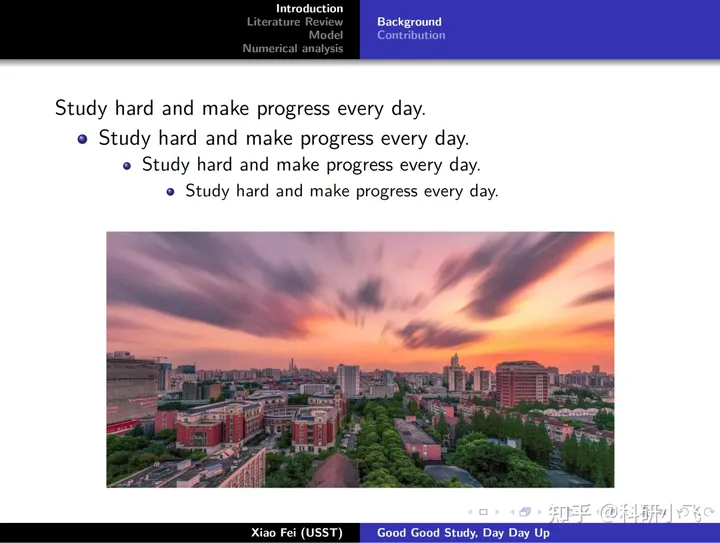本文介绍了文档智能如何能够利用大模型,比如chatgpt进行反向生成,做解析的逆操作,实现PPT自动生成的demo。
一、ChatPPT的实现思路
ChatPPT,旨在解决的问题是,自动地生成PPT文本。
1、先看有哪些生成场景
那么会有哪些场景?如果以输入输出来分:
输入的可以是一个用户的主题,例如输入“北京的旅游攻略”,直接输出一份PPT;
输入的可以是一个用户的主题以及主题的大纲,大纲可粗可细,粗则直接放一级标题,细则给出每个章节的层级标题目录。
这两个是发散性生成的范畴,以点扩面。另外一种是总结式,即输入的是一堆文档,提取其中的要点以及要点的内容,逐步地形成一级标题,二级标题,三级标题等。
2、再看实现这套需要哪些组件
无论是上面说的那种,都不在乎包括三个要素:
一组或者多组生成内容的prompt提示。用于指引大模型围绕给定主题、大纲、文章内容生成相关PPT章节的填充内容,这个一般需要我们进行人工设定,并且不同的prompt提示对文本生成质量影响较大。
一个足够好的生成模型。生成模型需要能够准确地理解指令,产生正确的内容,也能准确地按照特定格式地输出内容,以方便快速地获取相应内容。例如,根据主题生成大纲时,需要按照1、2、3等方式生成,如果生成每个章节的一级标题。二级标题时通常会要求使用json格式或者特殊符号作为分割来返回。这些都是要生成模型对结果形式指令有较好的遵循能力。比如ChatGPT、GPT4,或者经过这类技能特殊微调的大模型。
一个可以与PPT文档进行交互的程序组件。这个组件可以执行PPT文档生成过程中所需要的各种操作,包括文档创建、页面的新增、页面内容的编排(例如标题、一级一级、二级标题),页面图片的插入等。以python为例,可以使用python-pptx来实现,该组件提供了许多基础的操作接口。
3、有哪些可以注意的点
当我们有了上述3个重要组件时【理想情况下】,就可以实现这一工作,但为了保证较好地效果,我们可以尝试如下方法【从原理上来说】:
不能将宝押在生成模型上,为了得到较好的结果,可以制定完备的生成流程,例如先让其生成大纲,然后再逐步遍历大纲让它生成一级二级标题,再根据一级二级标题生成指定的内容,从单步变成多步。这个是产品化的思路,先流程化,然后再让技术做实现。
这种方式的好处在于,好处在于给到生成模型的压力降低,尤其是对其输出格式的容错率较高。
这种做法存在很大的问题就是,拆成多步会引来生成的次数倍增,是一种时间换质量的做法。
另一个,就是单纯使用python–pptx生成的文档很干瘪,很粗糙。
二、一个开源Demo级PPT生成案例
项目地址:https://github.com/HuiMi24/chatppt
该项目整体实现实现如下,流程较为清晰:先利用chatppt(topic, pages, api_key, language),生成所需要的ppt内容,再利用 generate_ppt(ppt_content)生成指定的ppt文档。
def main(topic: str, pages: int, api_key: str, language: str, template_path=None):
robot_print(“Hi, I am your PPT assistant.”)
robot_print(“I am powered by ChatGPT”)
# robot_print(“If you have any issue, please contact hui_mi@dell.com”)ppt_content = chatppt(topic, pages, api_key, language)
generate_ppt(ppt_content)
1、引入相关组件
相关组件包括pptx,用于操作ppt;openai,用于文本内容生成;
import openai
import json
import argparse
import time
import random
from pptx import Presentation
2、使用openai根据指定的主题topic来生成指定pages页数和language语言的ppt文档
可以看到,其中的核心是生成的输出格式,是严格的json格式,这个对应于上面的输出格式遵循,是个很难控制的点,本地测试之后,发现,基于chatglm6b生成的数据,很容易出现解析失败的情况。
此外,对于prompt,设计的也很简单;
messages = [
{
“role”: “user”,
“content”: f“Im going to prepare a presentation about {topic}, please help to outline detailed about this topic, output with JSON language with follow in format {output_format}, please help to generate {pages} pages, the bullet for each as much as possible, please only return JSON format and use double quotes, please return the content in {language}”,
},
]
该部分完整的内容如下:
def chatppt(topic: str, pages: int, api_key: str, language: str):
language_map = {“cn”: “Chinese”, “en”: “English”}
language = language_map[language]
## 输出的格式,对大模型要求较高output_format = {
“title”: “example title”,
“pages”: [
{
“title”: “title for page 1”,
# “subtitle”: “subtitle for page 1”, “content”: [
{
“title”: “title for bullet 1”,
“desctription”: “detail for bullet 1”,
},
{
“title”: “title for bullet 2”,
“desctription”: “detail for bullet 2”,
},
],
},
{
“title”: “title for page 2”,
# “subtitle”: “subtitle for page 2”, “content”: [
{
“title”: “title for bullet 1”,
“desctription”: “detail for bullet 1”,
},
{
“title”: “title for bullet 2”,
“desctription”: “detail for bullet 2”,
},
],
},
],
}
## 构造使用的prompt,这里用的是一步生成答案;messages = [
{
“role”: “user”,
“content”: f“Im going to prepare a presentation about {topic}, please help to outline detailed about this topic, output with JSON language with follow in format {output_format}, please help to generate {pages} pages, the bullet for each as much as possible, please only return JSON format and use double quotes, please return the content in {language}”,
},
]
robot_print(f“Im working hard to generate your PPT about {topic}.”)
robot_print(“It may takes about a few minutes.”)
robot_print(f“Your PPT will be generated in {language}”)
openai.api_key = api_key
completion = openai.ChatCompletion.create(model=“gpt-3.5-turbo”, messages=messages)
try:
content = completion.choices[0].message.content
# just replace to ” is not a good soluation # print(content)content = json.loads(content.strip())
returncontent
except Exception as e:
print(“Im a PPT assistant, your PPT generate failed, please retry later..”)
exit(1)
# raise Exception(“Im PPT generate assistant, some error happened, please retry”)3、多模型生成的结果进行解析,生成ppt
利用python-pptx进行逐页内容的生成,对于每一页slide,有包括title and subtitle、Pic with caption等不同位置的内容,根据实现得到的页面内容进行解析即可。
def generate_ppt(content: str, template=None):
ppt = Presentation()
iftemplate:
ppt = Presentation(template)
# Creating slide layoutfirst_slide_layout = ppt.slide_layouts[0]
# “”” Ref for slide types: # 0 -> title and subtitle # 1 -> title and content # 2 -> section header # 3 -> two content # 4 -> Comparison # 5 -> Title only # 6 -> Blank # 7 -> Content with caption # 8 -> Pic with caption # “””slide = ppt.slides.add_slide(first_slide_layout)
slide.shapes.title.text = content.get(“title”, “”)
slide.placeholders[1].text = “Generate by ChatPPT” pages = content.get(“pages”, [])
robot_print(f“Your PPT have {len(pages)} pages.”)
for i, page inenumerate(pages):
page_title = page.get(“title”, “”)
robot_print(f“page {i+1}: {page_title}”)
bullet_layout = ppt.slide_layouts[1]
bullet_slide = ppt.slides.add_slide(bullet_layout)
bullet_spahe = bullet_slide.shapes
bullet_slide.shapes.title.text = page_title
body_shape = bullet_spahe.placeholders[1]
for bullet in page.get(“content”, []):
paragraph = body_shape.text_frame.add_paragraph()
paragraph.text = bullet.get(“title”, “”)
paragraph.level = 1
paragraph = body_shape.text_frame.add_paragraph()
paragraph.text = bullet.get(“description”, “”)
paragraph.level = 2
ppt_name = content.get(“title”, “”)
ppt_name = f“{ppt_name}.pptx”ppt.save(ppt_name)
robot_print(“Generate done, enjoy!”)
robot_print(f“Your PPT: {ppt_name}”)
4、生成效果
该项目中给出了以“What is ChatPPT”、“AWS”是什么为例生成的ppt效果:


该方式提供了一个很简单的例子,基本可以串通流程,但效果有限,可以从prompt构造方式等多个方面进行优化,感兴趣的可以在此基础上进一步开发。
总结
本文主要介绍了chatppt实现的技术原理、三个必备要素以及一个开源的demo级项目,从中我们可以看到,决定最终效果的,是文本内容的生成,这个受限于prompt构造的方式以及生成模型的生成能力。
参考文献
1、https://github.com/HuiMi24/chatppt




